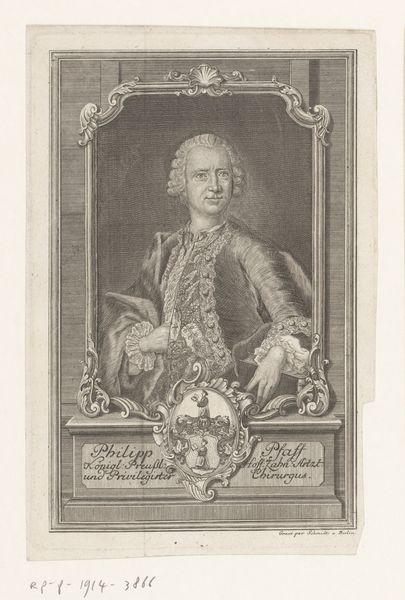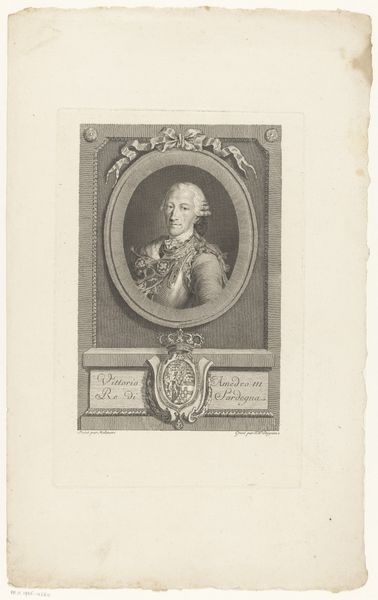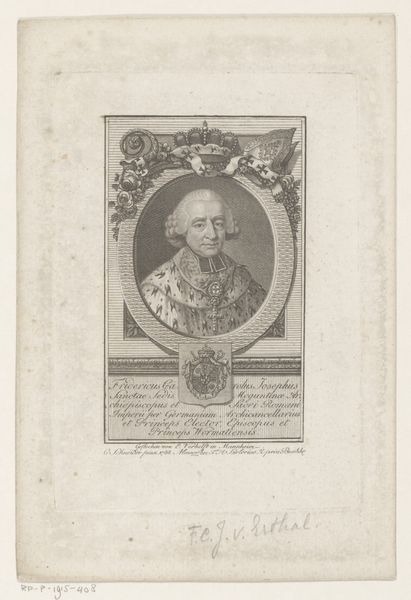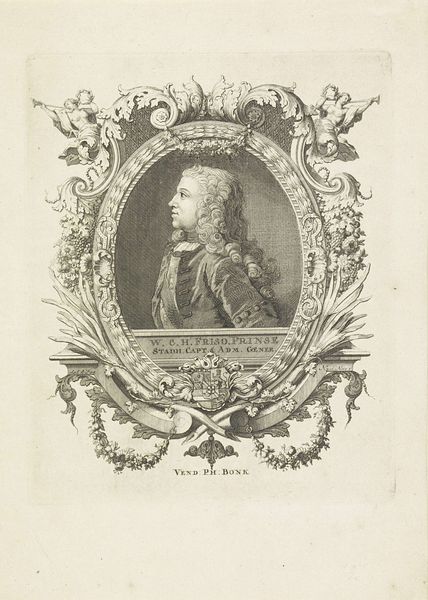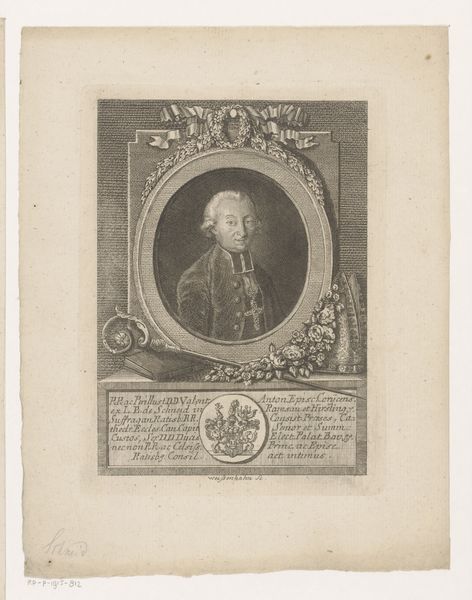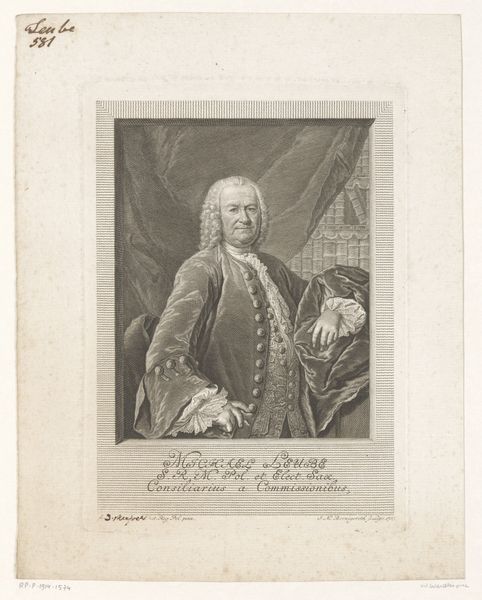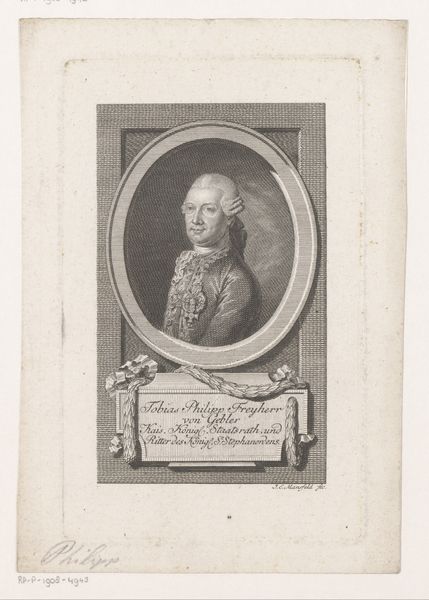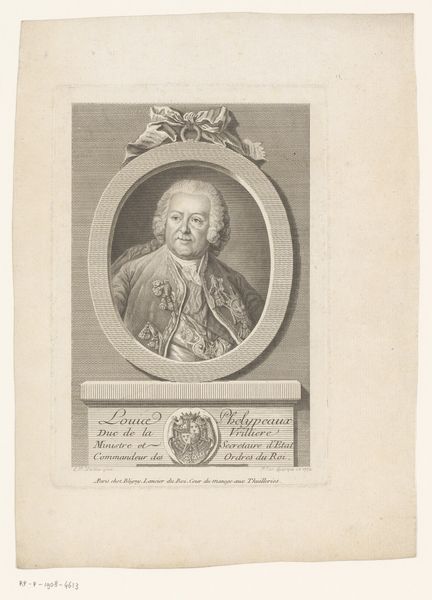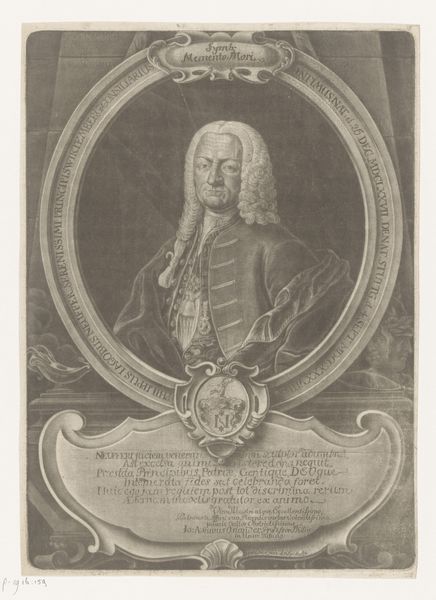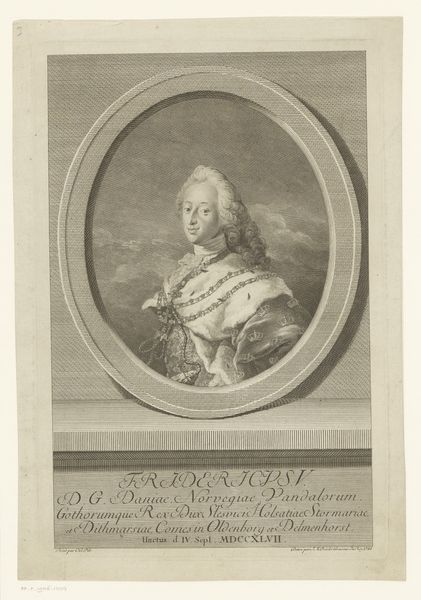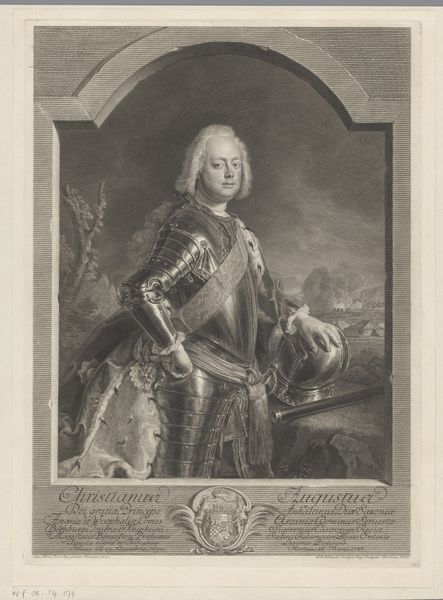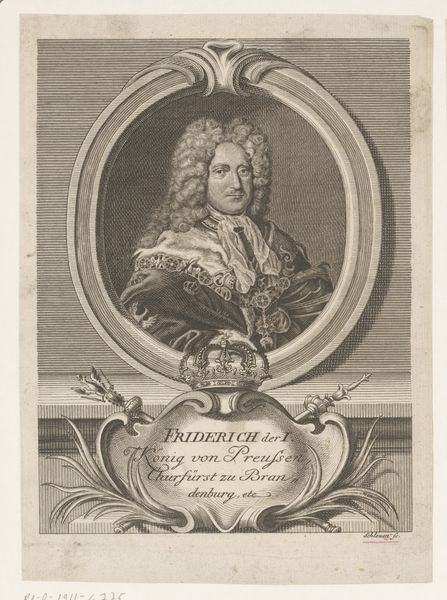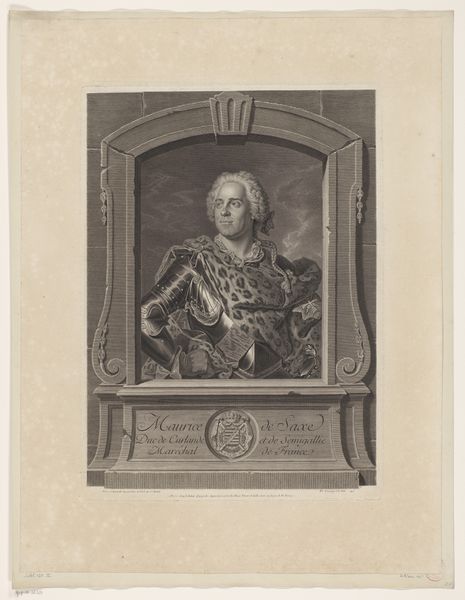
paper, engraving
#
portrait
#
old engraving style
#
paper
#
history-painting
#
academic-art
#
engraving
Dimensions: height 183 mm, width 117 mm
Copyright: Rijks Museum: Open Domain
Nicolas Dupin created this print of Jean-Frédéric Phélypeaux, Comte de Maurepas, likely in France during the late 18th century. The portrait is framed within an elaborate, decorative border, typical of the era’s aristocratic visual language, meant to convey status and power. But beyond the surface, what does this image tell us about the society in which it was produced? France in the late 1700s was on the brink of revolution, and images like these, celebrating the elite, played a role in shaping public opinion. Consider the institutional context. The print was likely commissioned to circulate amongst the Comte’s circle, reinforcing his position. The inscriptions in French further emphasize the sitter's virtues of loyalty to the throne. As art historians, we delve deeper, examining archival records, political pamphlets, and social histories to fully understand the complex interplay of art, power, and society. The meaning of this image is therefore not fixed, but shifts according to its social and institutional context.
Comments
No comments
Be the first to comment and join the conversation on the ultimate creative platform.
